buddhasbelly Itaewon(부다스벨리 이태원)
4.0Km 2020-12-24
48 Noksapyeong-daero 40-gil Yongsan-gu Seoul
+82-2-796-9330
It is a Thai food specialty store located in Itaewon. This restaurant's signature menu is som tam. This Western dishes restaurant is located in Yongsan-gu, Seoul.
Buddha'sbelly (부다스벨리)
4.0Km 2021-03-29
48, Noksapyeong-daero 40-gil, Yongsan-gu, Seoul
+82-2-796-9330
It is one of the best spots for a blind date in Itaewon. It is a Thai food specialty store located in Yongsan-gu, Seoul. The most famous menu is som tam.
Goobok Mandu (구복만두)
4.0Km 2017-01-25
10, Duteopbawi-ro, Yongsan-gu, Seoul
+82-2-797-8656
Operated by Korean husband and Chinese wife, it offers traditional authentic Chinese dumplings in a small place. Its signature menu, dumpling, passed down to the owner by her grandmother, features different tasty and texture comparing with Korean-style dumpling.
Buddhasbelly - Itaewon Branch(부다스벨리 이태원)
4.0Km 2021-04-20
48, Noksapyeong-daero 40-gil, Yongsan-gu, Seoul
+82-2-796-9330
It is a Thai food specialty store located in Itaewon. This restaurant's signature menu is som tam. This Western dishes restaurant is located in Yongsan-gu, Seoul.
Tumbas Yeonghwiwon y Sunginwon (서울 영휘원(순헌황귀비)과 숭인원(이진))
4.0Km 2022-07-15
Heungneung-ro 90, Dongdaemun-gu, Seúl.
Dentro de Yeonghwiwon se encuentra la tumba de la dama Sunheongwibi Eom, concubina del emperador Gojong y madre del príncipe Yeongchinwang. Actualmente la tablilla de la dama Eom se encuentra en el santuario Chilgung de Gungjeong-dong, en Jongno-gu. Yeonghwiwon antiguamente era el lugar de la tumba de la emperatriz Myeongseong Hwanghu, pero esta fue trasladada hacia Hongyuneung para guardar sepultura junto con el emperador Gojong en 1919.
Hyeseong Kalguksu (혜성칼국수)
4.0Km 2021-03-30
247-1, Wangsan-ro, Dongdaemun-gu, Seoul
+82-2-967-6918
It serves Kalguksu (chopped noodle soup), or kneaded noodles, with a 50-year tradition. The best menu at this restaurant is noodle soup with chicken. This Korean dishes restaurant is located in Dongdaemun-gu, Seoul.
Nuwa [Korea Quality] / 누와 [한국관광 품질인증/Korea Quality]
4.0Km 2021-03-29
3-1, Pirundae-ro 5na-gil, Jongno-gu, Seoul
This hanok (traditional Korean house) is located deep in the Seochon Village, west of Seoul’s Gyeongbokgung Palace. Its tasteful renovation of a small 33 m2 hanok made it highly popular among the younger guests. The courtyard has a low maple tree and tastefully arranged stones, while the hanok is capable of accommodating up to 2 persons.
This L-shaped hanok has a full window wall facing the living room, which is furnished with a low walnut table and a bathtub. Visitors can enjoy premium tea at the table. The bathtub, which is connected to the table at one end, can be used mainly for a foot bath with bath salts that assist circulation. There is also a restroom in the building.
Nuwa’s bedroom has a circular window, much like the full moon, with a view of the garden and the fringes of the Inwangsan Mountain.
NUHADANG [Korea Quality] / 누하당 [한국관광 품질인증]
4.0Km 2020-09-10
49-7, Pirundae-ro, Jongno-gu, Seoul
010-9692-1330
Guesthouse Nuha is a ‘hanok’ or traditional Korean house consisting of four guestrooms located in Nuha-dong, Seochon (west of Gyeongbokgung Palace, Jongno, Seoul) where many Confucian scholars and artists lived during the Joseon Dynasty.
Exuding a refined atmosphere, Guesthouse Nuha is very popular among not only domestic visitors but also foreign tourists who want to experience the flavor of Korea in a cozy hanok. All four guestrooms (An-bang, Sarang-bang, Geul-bang, and Byeol-dang) are covered with eco-friendly hanji (traditional Korean paper handmade from mulberry tree) wallpaper, and are equipped with a thick cotton-wool comforter and pillows imbued with the scent of Hinoki cypress tree to help guests relieve their fatigue.
Breakfast is served free of charge. Guests can also experience traditional Korean culture here, such as playing a Korean musical instrument (janggu or double-headed drum), playing a game of yut in the yard, or wearing hanbok (traditional Korean clothes). Although a local bus service passes through the village, it is highly recommended to take a quiet leisurely around the area.
Arboreto Hongneung (홍릉수목원)
4.0Km 2021-03-04
Hoegi-ro 57, Dongdaemun-gu, Seúl
+82-2-961-2522
Es el primer arboreto del país, que se estableció en el año 1922, cuando se instauró el proyecto forestal de Hongneung en Seúl. En este mismo arboreto se encontraba la tumba “Hongneung” de la reina Myeongseong Hwanghu (1897), la esposa del rey Gojong, de la dinastía Joseon. En la actualidad solo ha quedado una señal, porque fue trasladada a otro lugar.
Al ser el arboreto que pertenece al Instituto de Investigación Forestal de Corea, investiga y administra sistemáticamente las especies de plantas nacionales y extranjeras, realiza actividades académicas para el desarrollo del sector, y es un bosque de investigación que se esfuerza en suministrar los recursos genéticos de las plantas. Los domingos abre al público en general, y en los días de entre semana recibe a grupos de estudiantes, para que sea una actividad académica del medio ambiente y de la naturaleza, ofreciendo así la oportunidad de reflexionar y experimentar el valor del bosque.
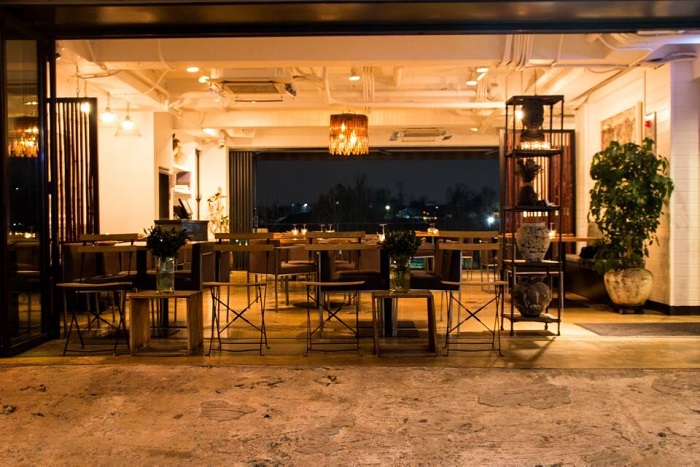
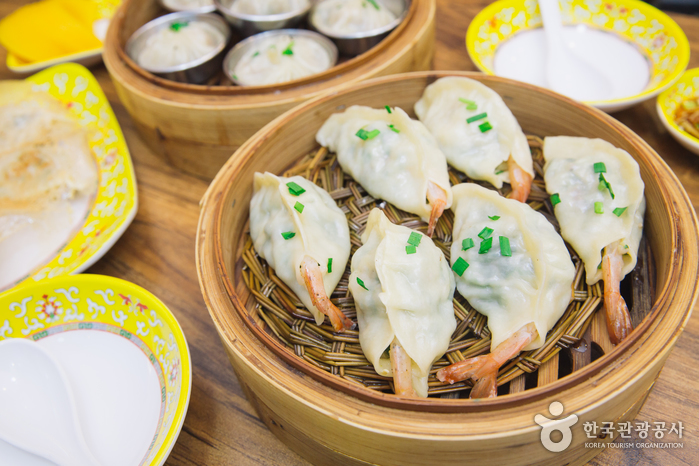
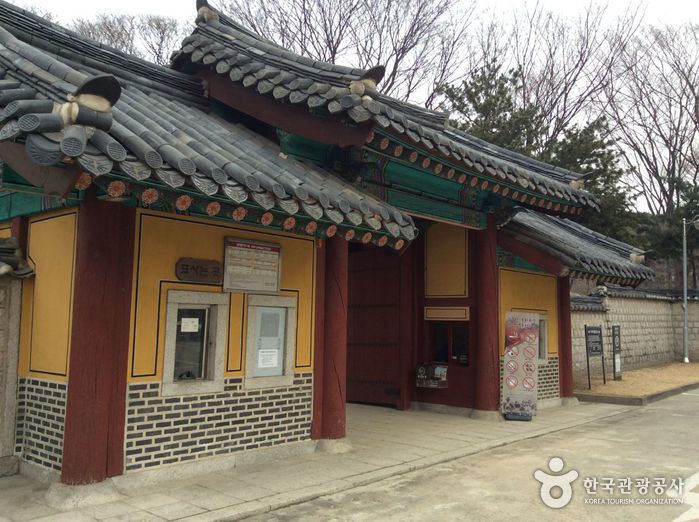
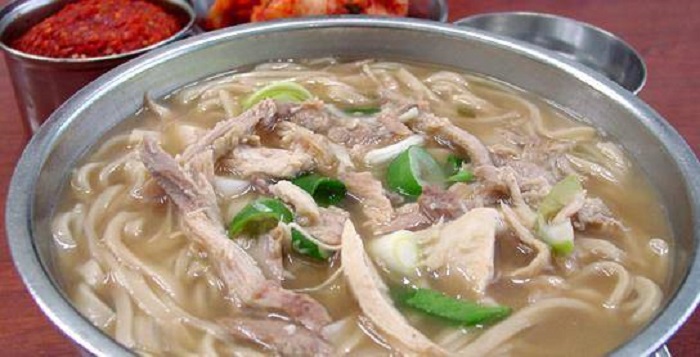
![Nuwa [Korea Quality] / 누와 [한국관광 품질인증/Korea Quality]](http://tong.visitkorea.or.kr/cms/resource/07/2707607_image2_1.jpg)
![NUHADANG [Korea Quality] / 누하당 [한국관광 품질인증]](http://tong.visitkorea.or.kr/cms/resource/58/2532358_image2_1.jpg)
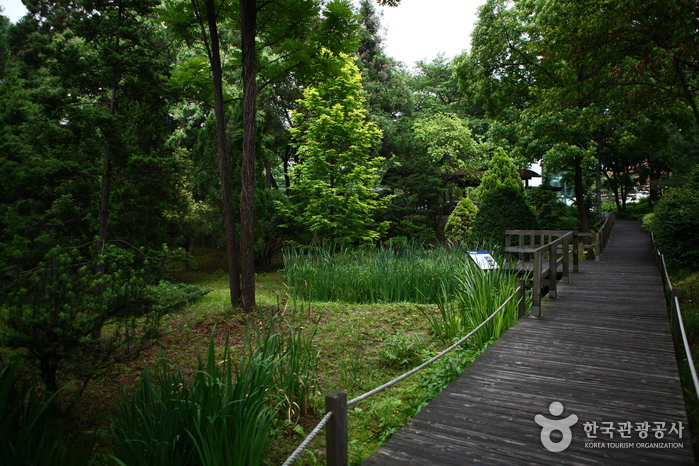
 Español
Español
 한국어
한국어 English
English 日本語
日本語 中文(简体)
中文(简体) Deutsch
Deutsch Français
Français Русский
Русский